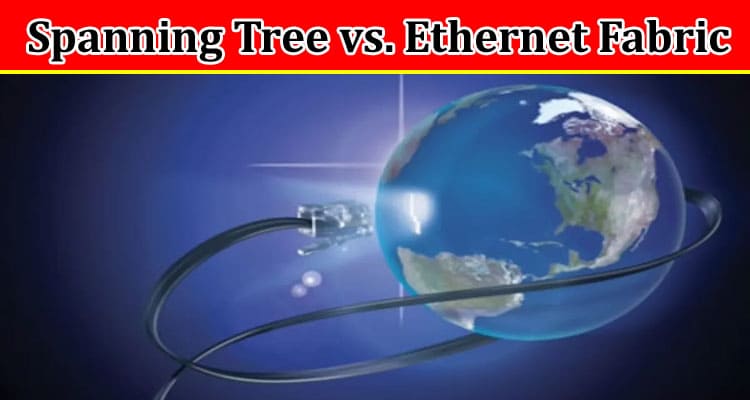Choosing the appropriate architecture for your network can be a challenging and crucial choice in the constantly changing world of networking technologies. The Spanning Tree Protocol (STP) and Ethernet Fabric are two well-known methods that frequently appear in this context. Each has a unique set of characteristics, advantages, and restrictions. In order to assist you in choosing which network architecture is the greatest fit for your needs, we will examine these two in this post, highlighting their similarities, weaknesses, and use cases.
Understanding Spanning Tree Protocol (STP)
Spanning Tree Protocol, commonly referred to as STP, is a fundamental protocol that plays a crucial role in preventing network loops in Ethernet networks. Developed by Dr. Radia Perlman in the 1980s, STP is part of the IEEE 802.1D standard.
Key Characteristics of STP:
- Loop Prevention: The main goals of STP are to avoid broadcast storms and network loops. In order to maintain a topology free of loops, it does this by finding redundant links in a network and blocking some of them.
- Legacy Technology: STP is a well-known technology that has been applied in Ethernet networks for many years. The majority of network switches and routers support it.
- Convergence Time: The comparatively long convergence time of STP is one of its flaws. It may take several seconds or even minutes for the network to converge and adjust to the new topology when a connection fails or changes.
- Limited Use in Modern Data Centers: STP is less suited to the accelerated convergence and scalability required by contemporary data centres and cloud settings.
Understanding Ethernet Fabric
Contrarily, a more modern and adaptable method of network construction is Ethernet Fabric. It has grown in prominence as networks and data centres have developed to handle more traffic and meet rising performance and agility demands.
Key Characteristics of Ethernet Fabric:
- Scalability: Due to its tremendous scalability, Ethernet Fabric is appropriate for use in big data centre deployments. Massive volumes of bandwidth can be handled, and virtualization technologies can be integrated with ease.
- Low Latency: Because of its low latency properties, Ethernet Fabric is well suited for real-time data processing applications like financial trading platforms and multimedia streaming.
- High Availability: With high availability and redundancy in mind, Ethernet Fabric was created. It can swiftly recover from device or link failures, reducing downtime.
- Convergence Speed: Rapid convergence and sub-second failover capabilities are provided by Ethernet Fabric. This guarantees that network outages are kept to a minimum even in the event of breakdowns.
- Simplified Management: Centralised administration tools that make network configuration, monitoring, and troubleshooting easier are frequently included with Ethernet Fabric.
Choosing Between Spanning Tree and Ethernet Fabric
After learning the fundamentals of both STP and Ethernet Fabric, let’s compare them in a variety of ways to make it easier for you to choose which is best for your network:
1. Network Size and Scalability:
STP: STP can function well in smaller networks, but as networks get bigger, it becomes less practical. Large data centres may find it less effective due to its scalability issues.
Ethernet Fabric: When it comes to scalability, Ethernet Fabric excels. It is a fantastic option for businesses with vast infrastructure needs because it can easily meet the demands of massive networks and data centres.
2. Performance and Latency:
STP: STP may introduce some latency due to its convergence process, which can take seconds or minutes. This latency may not be acceptable for applications that require minimal delay.
Ethernet Fabric: When it comes to scalability, Ethernet Fabric excels. It is a fantastic option for businesses with vast infrastructure needs because it can easily meet the demands of massive networks and data centres.
3. High Availability:
STP: STP does offer some redundancy and high availability, but its convergence time can lead to noticeable network interruptions in the event of failures.
Ethernet Fabric: High availability is a priority in the design of Ethernet Fabric. It offers quick failover and recovery, ensuring little disruption and downtime.
4. Management and Configuration:
STP: STP configuration and management can be challenging, particularly in bigger networks. To prevent incorrect setups that could cause network problems, meticulous preparation is necessary.
Ethernet Fabric: Ethernet Fabric often offers centralized management tools that simplify configuration and monitoring. This can be a significant advantage for organizations looking to streamline their network operations.
5. Modern Data Center Needs:
STP: STP might not be able to satisfy the demands of contemporary data centres, where agility, quick provisioning, and virtualization support are crucial.
Ethernet Fabric: Modern data centre requirements and Ethernet Fabric are perfectly matched. It delivers the flexibility necessary for dynamic resource allocation and can smoothly connect with virtualization technologies like VMware.
6. Cost Considerations:
STP: STP is frequently seen as an affordable option for smaller networks with modest scalability and performance requirements.
Ethernet Fabric: Even though Ethernet Fabric requires a larger initial investment, its long-term advantages in terms of performance, scalability, and decreased downtime might make the price worthwhile.
7. Industry Standards:
STP: STP is an IEEE standard (802.1D) that is extensively backed by manufacturers of network equipment.
Ethernet Fabric: Vendors may offer several Ethernet Fabric solutions, and there might not be a single implementation that is standardised. However, a lot of businesses provide powerful proprietary Ethernet Fabric solutions.
Conclusion: Making the Right Choice
The individual needs and objectives of your network will determine whether to use Ethernet Fabric or Spanning Tree Protocol (STP). STP might be adequate if you’re in charge of a small to medium-sized network with little scaling requirements. However, Ethernet Fabric is probably a better option for bigger networks, data centres, or applications that require low latency and high availability.
In the end, the choice should be based on a careful analysis of the present and future needs of your network, taking into account elements like performance, scalability, latency tolerance, and management complexity. You may make a decision that promotes the expansion and effectiveness of your organisation and is in line with the networking objectives of your company by carefully weighing these factors.





